Abstract
Purpose
To compare intraocular straylight in normal and cataractous eyes as the morphology and to compare straylight as the result of subjective symptoms in early cataract cases using the C-quant straylight meter, the only tool to measure light scattering in media.
Methods
Straylight values were measured in 217 normal eyes and 138 cataractous eyes. Cataractous eyes were classified into posterior subcapsular opacity, anterior subcapsular opacity and nucleosclerosis. Straylight values of each group were measured. The 56 early cataractous eyes were categorized into two groups, depending on the presence of subjective symptoms, and each straylight value was measured. The preoperative and postoperative straylight values of early cataracts were also compared.
Results
The mean straylight values of normal and cataractous eyes were 1.34 and 2.46, respectively. The value of posterior subcapsular opacity (2.81) was significantly higher than that of anterior subcapsular opacity (2.33) and nucleosclerosis (1.99). The straylight values of early cataracts were significantly higher in the group with subjective symptoms (2.02) than in the group without subjective symptoms (1.56). The postoperative straylight value decreased to 1.42.
Conclusions
The posterior subcapsular cataract showed significantly high intraocular straylight, indicating that light scattering occurred to a greater extent in this group. Light scattering occurred more in early cataractous eyes with subjective symptoms than in eyes without symptoms, and light scattering was reduced after surgery. The C-quant straylight meter, which measures the light scattering in media, can be a useful tool to determine the time of cataract surgery and to evaluate the quality of vision.
References
1. van den Berg TJ. Introduction to retinal straylight. Netherlands Institute for Neuroscience;2004. p. 1–11.
3. van Rijn LJ, Nischler C, Gamer D, et al. Measurement of stray light and glare: comparison of Nyktotest, Mesotest, stray light meter, and computer implemented stray light meter. Br J Ophthalmol. 2005; 89:345–51.

4. Aslam TM, Haider D, Murray IJ. Principles of disability glare measurement: an ophthalmological perspective. Acta Ophthalmol Scand. 2007; 85:354–60.

5. Chylack LT Jr, Wolfe JK, Singer DM, et al. The Lens Opacities Classification System III. The Longitudinal Study of Cataract Study Group. Arch Ophthalmol. 1993; 111:831–6.
6. van den Berg TJ, van Rijn LJ, Michael R, et al. Straylight effects with aging and lens extraction. Am J Ophthalmol. 2007; 144:358–63.

7. García-Lázaro S, Ferrer-Blasco T, Ortí-Navarro S, et al. Relevance of pupil size in the clinical determination of retinal straylight on young healthy human eyes. Graefes Arch Clin Exp Ophthalmol. 2010; 248:395–9.

8. Franssen L, Coppens JE, van den Berg TJ. Compensation comparison method for assessment of retinal straylight. Invest Ophthalmol Vis Sci. 2006; 47:768–76.

9. Van den Berg TJ. Compensation comparison in the Oculus C-Quant Straylight Meter. Netherlands Institute for Neuroscience;2004. p. 1–18.
10. Coppens JE, Franssen L, van Rijn LJ, van den Berg TJ. Reliability of the compensation comparison straylight measurement method. J Biomed Opt. 2006; 11:34027.

11. Stifter E, Sacu S, Weghaupt H. Functional vision with cataracts of different morpholoties: comparative study. J Cataract Refract Surg. 2004; 30:1883–91.
12. Stifter E, Sacu S, Thaler A, Weghaupt H. Contrast acuity in cataracts of different morphology and association to self-reported visual function. Invest Ophthalmol Vis Sci. 2006; 47:5412–22.

13. Chua BE, Mitchell P, Cumming RG. Effects of cataract type and location on visual function: The Blue Mountains Eye Study. Eye. 2004; 18:765–72.

Figure 1.
C-quant straylight meter (Oculus GmbH, Wetzlar, Germany). The subject must position the eye close to the eye-piece with occluding the opposite eye, and see the test fields. The task for the subject is to decide which test field flickers stronger and press the button.
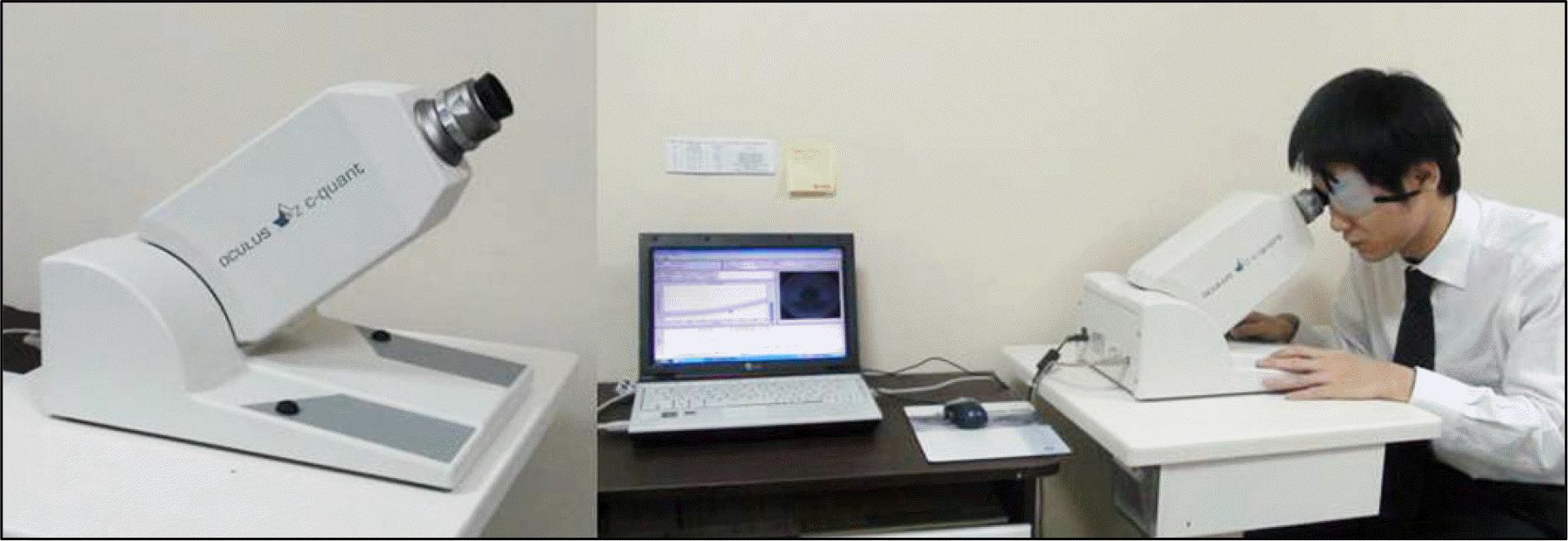
Figure 2.
Compensation comparison method. When the straylight source flickers, it can cause straylight in a subject's eye. The test field (center of the circle) is subdivided into two half fields. One half gives compensation light but the other half does not. The subject can compare different compensation values to no compensation and is forced to decide which half flickers stronger.
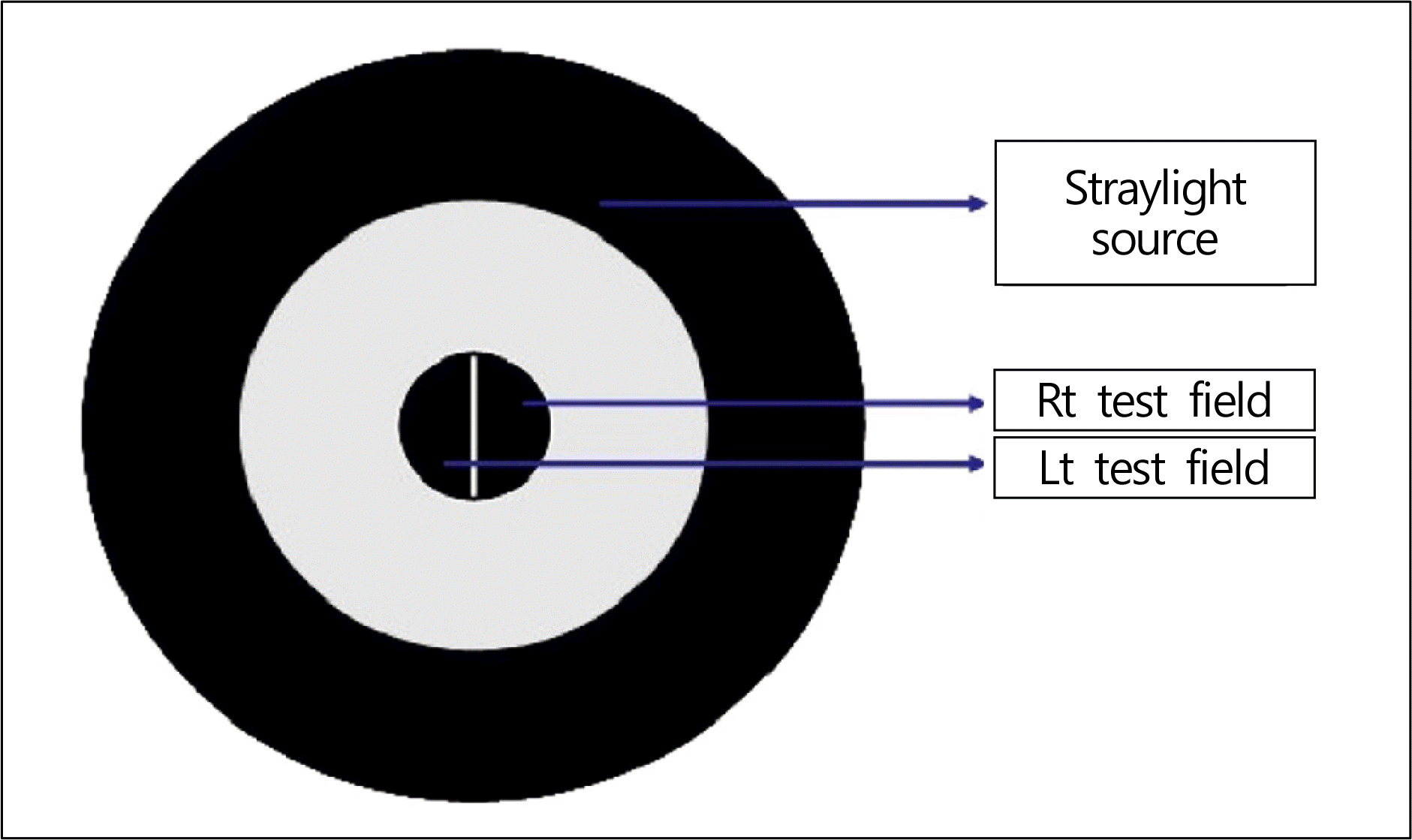
Figure 3.
The result of C-quant straylight meter. The value of log [s] shows the straylight value (gray circle). If the value of Esd is larger than 0.08 or, the value of Q is smaller than 1.0, the measurement is unreliable and the subject must repeat the test.
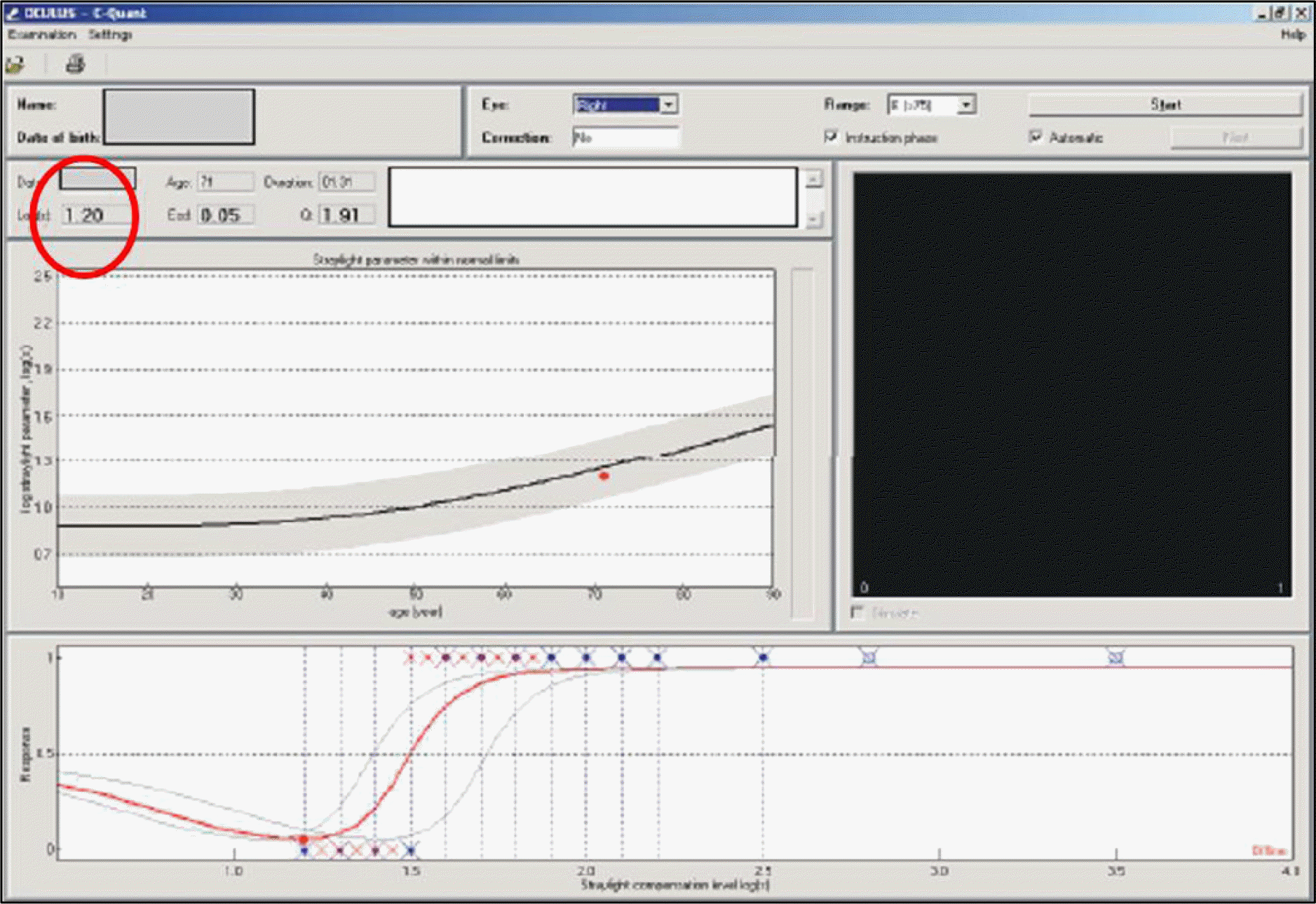
Figure 4.
Straylight value in normal population. Open circles show each data of straylight and the linear line means the regression line. Mean straylight value of young (30 years), healthy people is about 0.95 and 1.34 at 70 years.
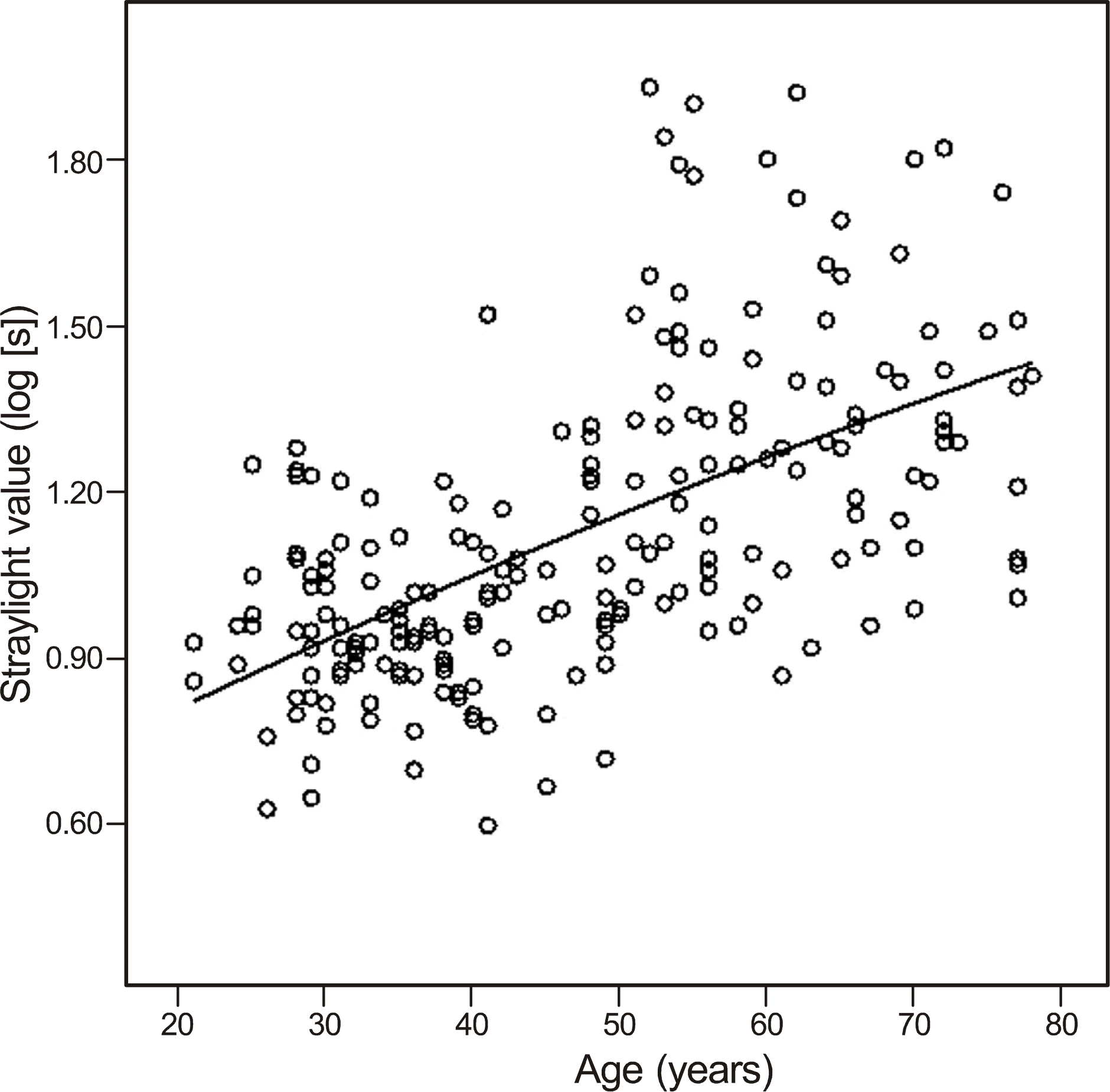
Figure 5.
Graph showing straylight value of cataractous eyes with regression line. Mean straylight value is 2.14 at 50 years and 2.30 at 70 years.
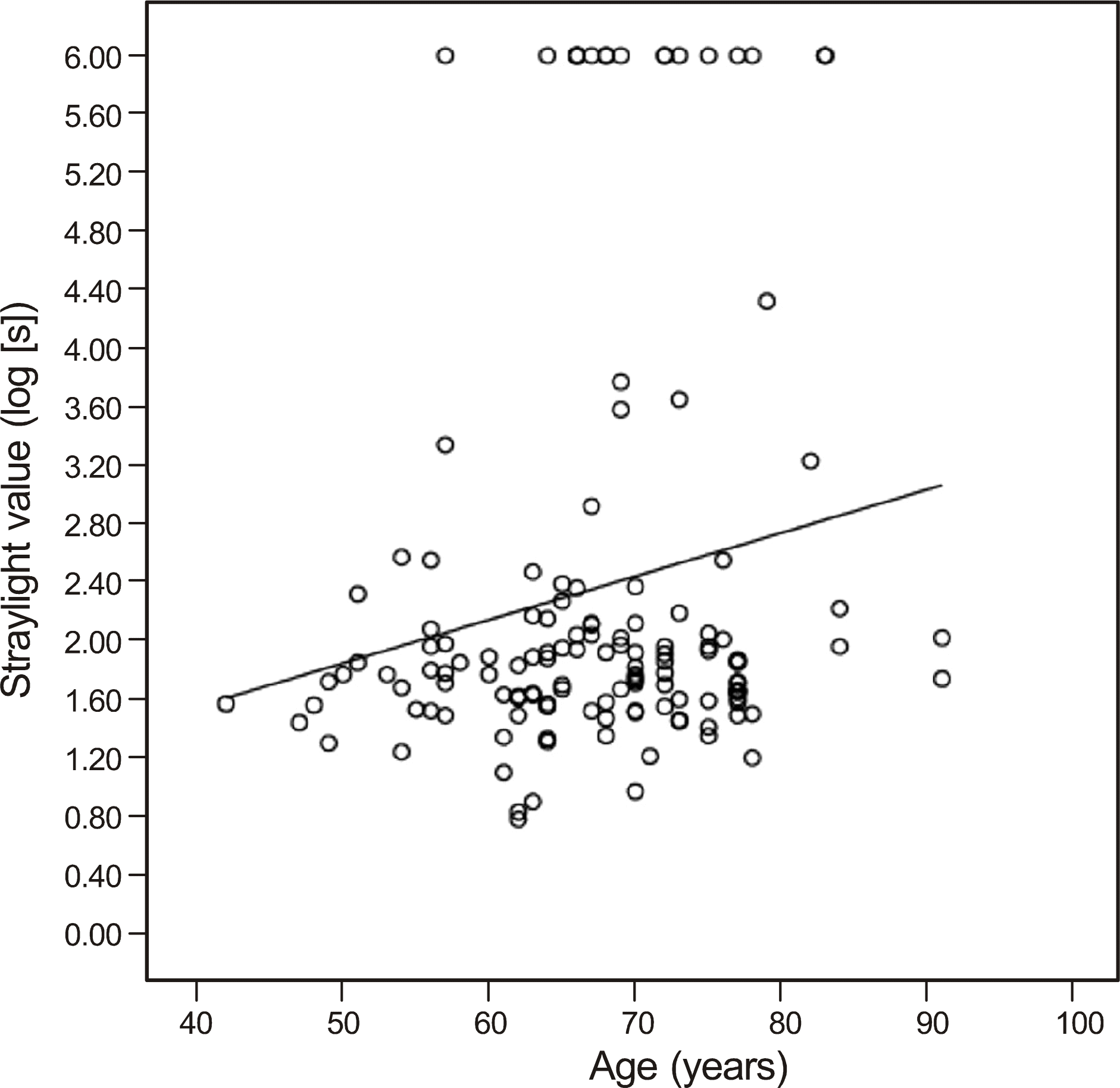
Figure 6.
Straylight values in cataracts of different morphology (posterior subcapsular opacity, anterior subcapsular opacity, nucleosclerosis). Posterior subcapsular cataract shows significantly high straylight value (2.81) than other types of cataract.
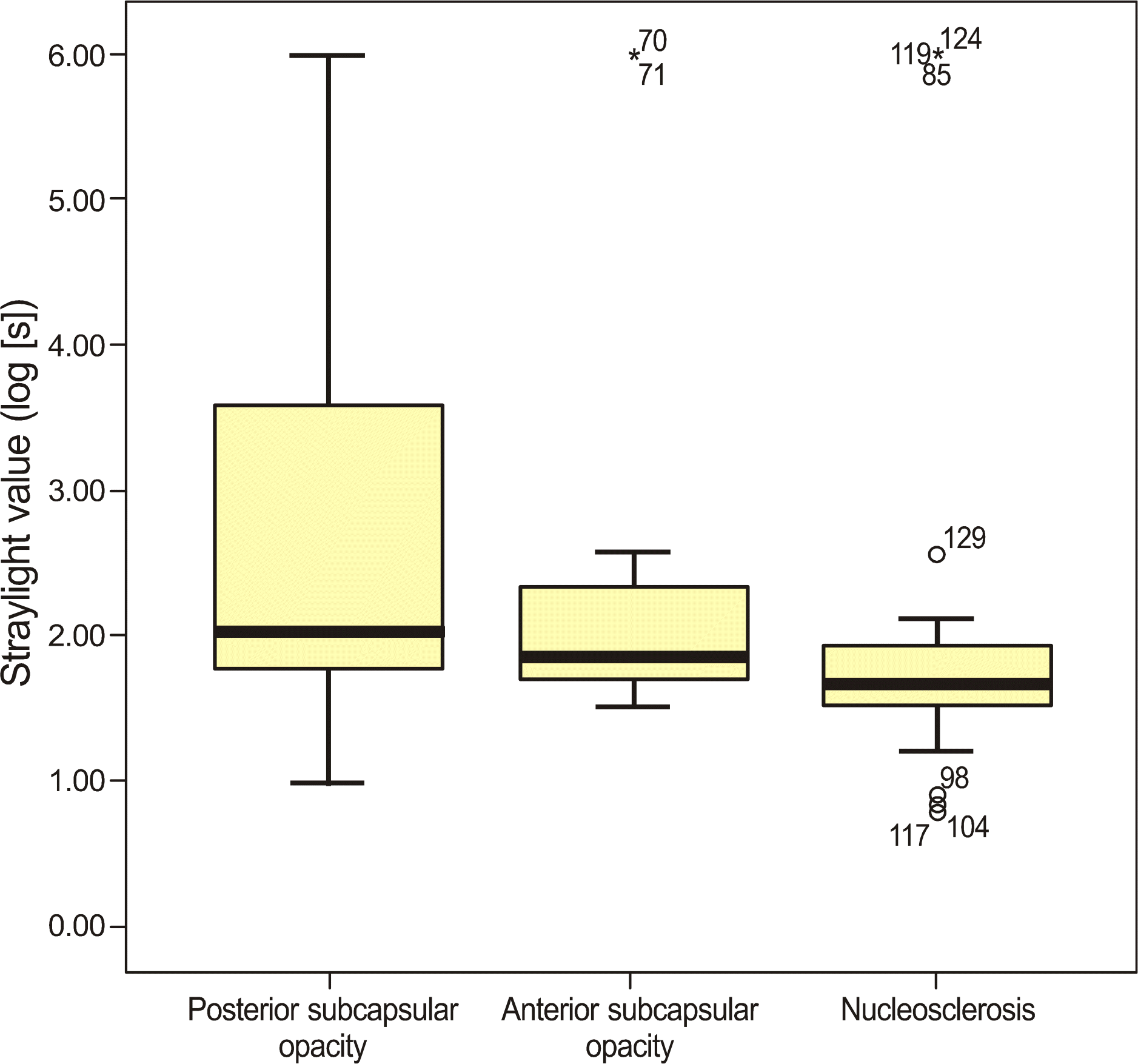
Figure 7.
Comparison of straylight values in early cataract depending on the presence of subjective symptoms. The patients with subjective symptoms have significantly high straylight value than the patients without symptoms.
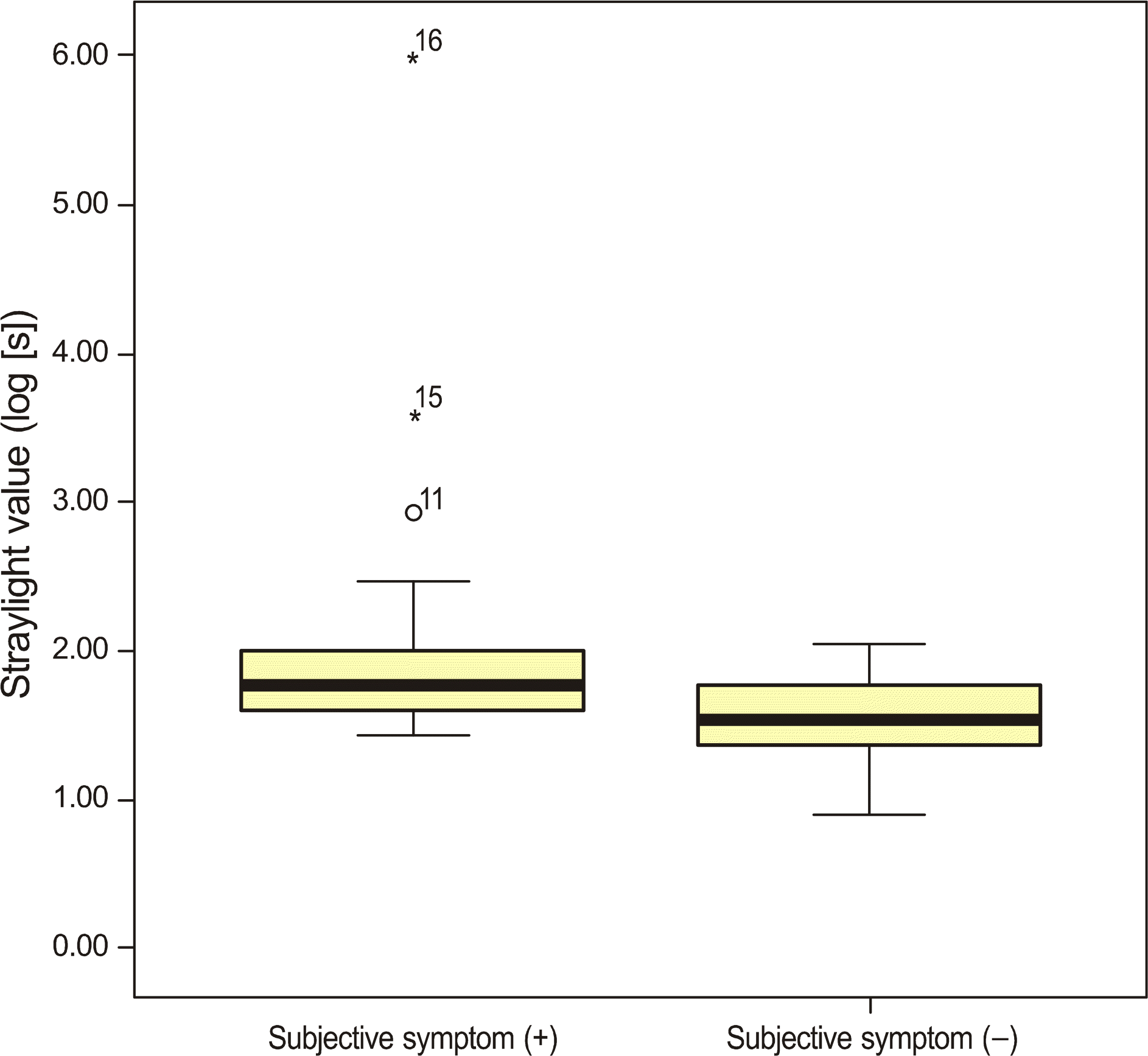
Figure 8.
Comparison of preoperative and postoperative straylight values in early cataract. The straylight values were significantly decreased after cataract operation.
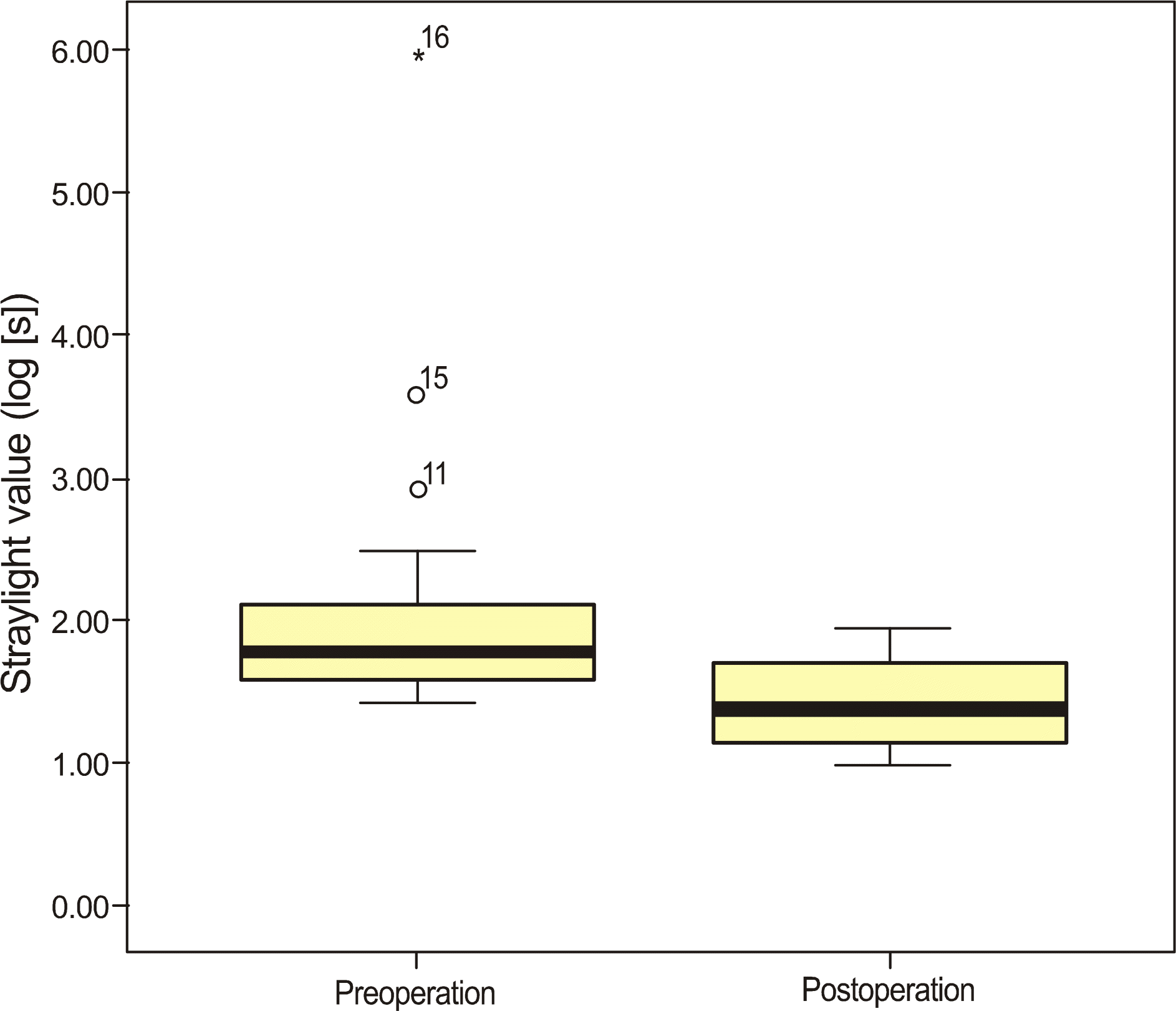
Figure 9.
Direct compensation method. The straylight source is intermittently white and black, so the subject feels that it flickers. In the on-phase, the straylight source is projected on the retina (non-scattered light), but, due to optical imperfections of the media, a small part of the light is scattered to other parts of the retina, including the fovea, and the subject sees the test field a little bit gray. In the off-phase, some light (compensation light) is projected from the test field. It will be flickering less than when there was no compensation light, because the test field is now gray in both the on- and off-phase. If the compensation light in the off-phase is same as the straylight in the on-phase, the flicker will disappear. We can calculate the amount of straylight, because we know the amount of compensation light.
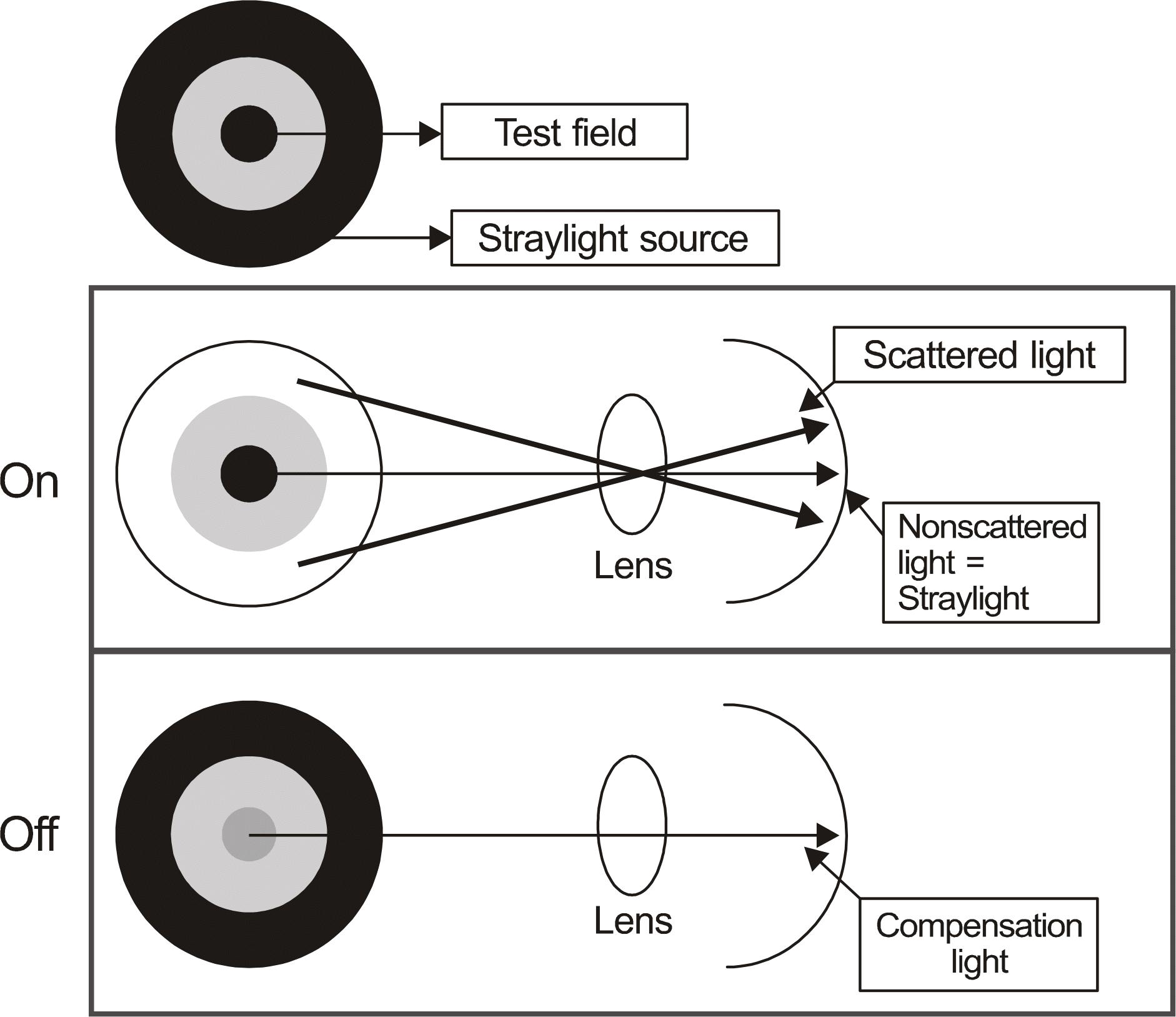
Figure 10.
Comparison between refraction type blur and straylight disturbance. (A) Refraction type blur, (B) Normal eye, (C) Increased straylight. Increased straylight has a much stronger effect on the quality of vision than decreased visual acuity.





 PDF
PDF ePub
ePub Citation
Citation Print
Print


 XML Download
XML Download